Reports
Iran’s Natanz Tunnel Complex: Deeper, Larger than Expected
by David Albright, Sarah Burkhard, and John Hannah [1]
January 13, 2022
The new Natanz underground complex, located in the mountainous area south of the main uranium enrichment site, will feature halls more deeply buried than the Fordow uranium enrichment site, itself deeply buried. Both are significantly deeper underground than the buried centrifuge halls at the main Natanz site, each only eight meters below ground.
Given the size of the mountain, the new underground complex also has the potential to be much larger in floor space than the Iran Centrifuge Assembly Center (ICAC), an aboveground facility at the main Natanz site destroyed in July 2020 and slated for replacement in the new underground facility. The potential size of the underground complex raises questions about what capabilities this new tunnel complex will provide in addition to a new advanced centrifuge assembly plant. A Western intelligence official recently stated that there is strong reason to believe that an enrichment plant is being built at the Natanz underground site, and reiterated the claim in a follow-up conversation. The Institute was not able to independently confirm this, but a small, advanced centrifuge enrichment plant is certainly the most worrisome possibility.
Considering Iran’s record of building clandestine nuclear facilities, getting greater clarity at what Iran intends to do at the new Natanz underground site should be priority for the International Atomic Energy Agency (IAEA) and all concerned countries. If Iran is building an enrichment plant and did not declare it to the IAEA when it authorized construction, this would be a serious safeguards violation.
The construction of the new underground complex has been an Iranian priority, following the sabotage of the ICAC. Ali Akbar Salehi, the then-head of the Atomic Energy Organization of Iran (AEOI) stated in April 2021, “We are working 24/7 to move all our sensitive halls into the heart of the mountain near Natanz.”2 Nonetheless, 18 months after the destruction of the ICAC, the replacement facility remains undone. Salehi had also said they hoped the halls “will be ready by next year so we can move these facilities to them.” It is as yet unknown whether the new site will be ready for operation in 2022.
The ICAC embodied a capability to assemble thousands of advanced centrifuges per year. As Iran awaits the completion of the new underground complex, it is currently depending on ad hoc aboveground centrifuge capabilities limited to the assembly of hundreds of advanced centrifuges per year.3 In terms of advanced centrifuge assembly capability, the ICAC’s destruction set back Iran’s centrifuge program significantly and continues to do so.
Iran has not publicly supplied much information about the new complex. However, its potential size and depth suggests that the new complex will hold a facility with at least the capacity of the ICAC, and perhaps more activities, all benefiting from similar or even greater protection than the underground enrichment plant at Fordow.
Status of Visible Construction
The construction of the new underground complex began shortly after the destruction of the ICAC. Figure 1 shows an overview of the area, including the Natanz enrichment plant and the mountainous area south of it. Satellite images throughout 2021 show extensive excavation activities, with spoil piles growing steadily. As of November 2021, the area remains a major construction zone, excavation appears ongoing, and the overall tunnel facility does not appear finished. Construction materials visibly stored along the graded roads may indicate ongoing tunnel lining efforts or that Iran has begun to outfit the interior in parts of the tunnel complex.
Two tunnel entrance areas, one west and one east of a large mountain, with three likely tunnel portals have been identified in commercial satellite imagery, as well as a construction staging area and probable future above-ground support site.4 In addition, near the Western tunnel portal, there is road grading, perhaps for a second Western portal, or the genesis of an access route to the top of the mountain to allow the construction of a ventilation shaft/system on the top of the mountain. Figure 2 shows these four locations, as of November 2021. Figure 3 shows a close-up of the two Eastern tunnel portals to the left and right of a small mountain ridge. Figure 4 shows a close-up of the Western tunnel entrance, which appears to feature a reinforced concrete portal. It is unknown whether the reinforcement was planned from the beginning or whether it represents an unexpected delay.
Figure 1. The tunnel construction area in relation to the Natanz enrichment halls.
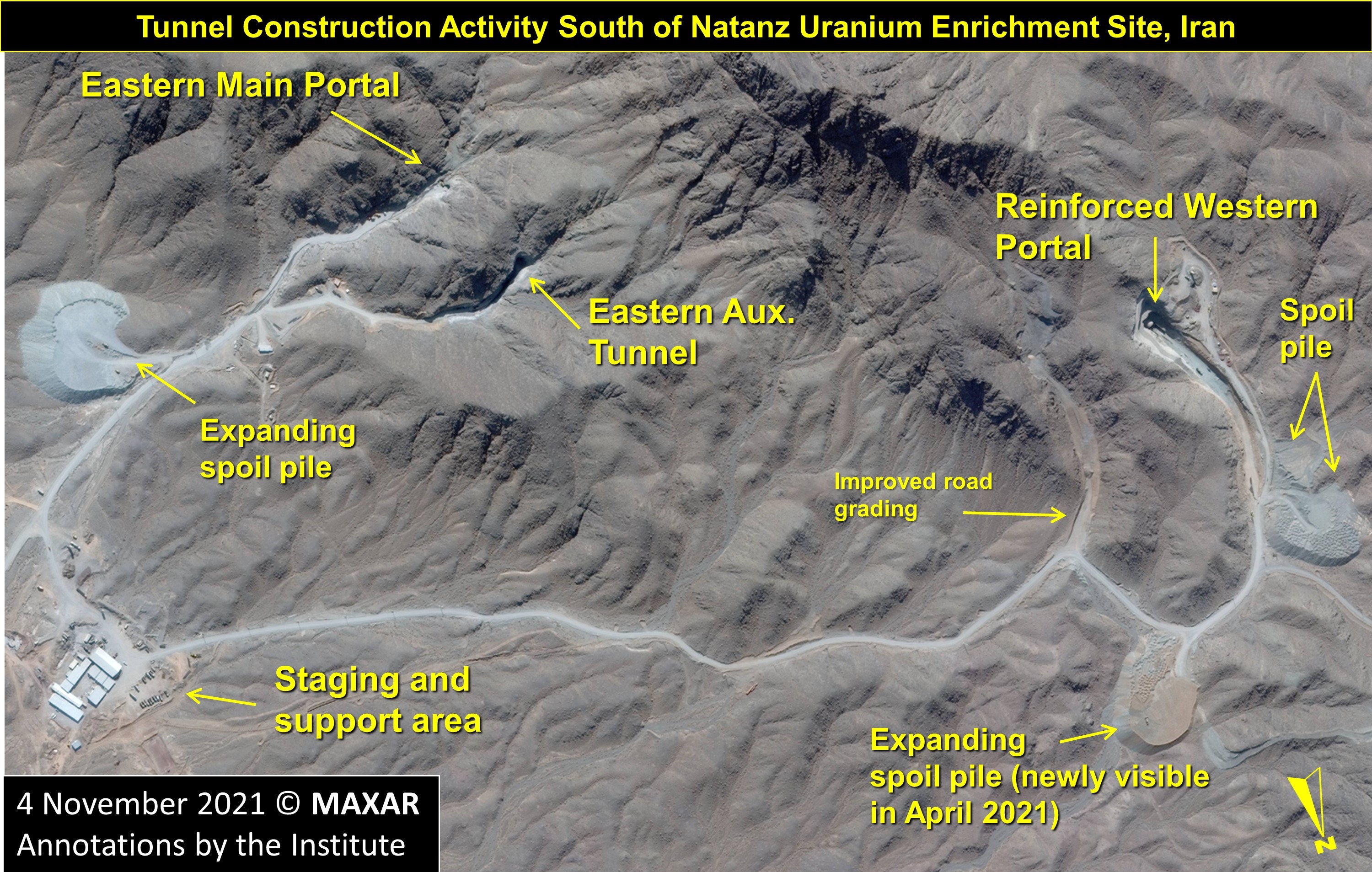
Figure 2. Overview of the tunnel construction area.
Figure 3. Close-up of the Eastern tunnel portals.
Figure 4. Close-up of the Western tunnel portal.
The Eastern portals likely join before proceeding as one tunnel deep under the mountain, similar to the two sets of two tunnel entrances observed at Fordow. This practice may accelerate construction of a relatively long tunnel by providing additional operating space and ventilation. This Eastern entrance may be better protected than Fordow’s tunnel entrances, since it appears to be located under a small mountain peak (see Figure 3). The implications of water flow appearing to stem from near one of the Eastern portals, and whether this means that the tunnel is dug at a slope could not be assessed.
The size of the current staging area and probable future support site has grown in recent months, with additional buildings and foundations added, as well as a recreational facility. This relatively large support area, itself occupying more space than the destroyed ICAC, may also indicate that larger-scale activities are planned for the underground facility.
Depth of New Natanz Halls
The main mountain harboring the new Natanz tunnel complex is called Kuh-e Kolang Gaz La. It has a height of 1608 meters above sea level. In comparison, the mountain harboring the Fordow centrifuge enrichment plant, called Kūh-e Dāgh Ghū’ī, is about 960 meters tall, making the Natanz’ mountain about 650 meters or well over 50 percent taller, potentially providing even greater protection to any facility built underneath it. Fordow is already viewed as so deeply buried that it would be difficult to destroy via aerial attack. The new Natanz site may be even harder to destroy.
As the Natanz area already contains a tunnel complex associated with the enrichment site, the question is: Why did Iran not choose to expand the existing tunnel to fit the relatively small assembly center? One possible explanation is that the adjacent mountain is taller, offering more protection and greater floor space.
The depth of the underground facility can be estimated by comparing the heights of the mountain with the elevation at the tunnel entrances and by considering the possible incline of the tunnel entrance ramps to the main underground halls.
Difference from Mountain Peak to Portal Entrances. The new Natanz site tunnel entrances are at an elevation of 1512 meters (4960 feet) for the Western entrance and 1445 meters (4740 feet) for the Eastern entrance. Given a mountain height of about 1590 meters along the ridge, if the tunnels were dug horizontally, the inner halls would be 78 or 145 meters below the height of the mountain. Thus, the new site would be as or significantly more deeply buried than Fordow, reportedly 80-90 meters below its mountain peak.
Incline of Entrance Tunnels. Another important consideration is the incline in the tunnels as they lead to the underground halls. In the case of Fordow, the tunnel entrances are at an elevation of 905 meters (2970 feet) for the west entrances and 910 meters (3000 feet) for the adjacent east entrances. If the tunnels were dug horizontally, this would result in a depth of about 50 meters under the mountain peak, which measures about 960 meters. However, in 2011/2012, it was reported that the Fordow facility is about 80-90 meters underground.5 Of note, these depth reports circulated many years before a schematic of the Fordow underground facility (then called the Al Ghadir project of the Amad Plan) became available through the Israeli seizure of the Iran Nuclear Archive in early 2018 (see Figure 5).6
The Al Ghadir schematic places the main hall under the nearby mountain ridge and shows that the tunnel entrances are leading fairly directly to it. The distance from the tunnel entrances to the approximate location of the main hall covers about 300 meters. If the enrichment halls are indeed buried 80 to 90 meters under the peak, this would imply that the tunnels were not dug horizontally, but downward sloping, an implication confirmed by a senior official knowledgeable about the Fordow underground site. The grade of the ramps is not known. Moreover, are they straight or do they involve one or more switchbacks or helical turns as they progress toward the underground halls? Neither is indicated in the Fordow schematic, but both are possible. If the ramps do not continue all the way until the main hall, rather only half or two-thirds of the distance to the main hall, resulting in a net ramp length of 150 or 200 meters, respectively, they would need to have a slope or grade of 15 to 20 percent to allow the enrichment halls to be 80 meters under the mountain peak. Ramps in mines often have grades of 10 to 15 percent.7 Moreover, in the United States, according to the International Building Code, although non-parking ramps should not exceed 14 percent, non-parking ramp slopes up to 20 percent are considered if additional measures are taken.8 Although a straight ramp is possible, the grade would be rather steep, suggesting the existence of switchbacks or helical turns or that the depth of the halls is less than 80 meters.
In comparison, if the Western and Eastern tunnels at the Natanz site were dug horizontally as mentioned above, the inner halls would be 78 or 145 meters below the height of the mountain, respectively. If the two tunnels met at a height in between, the halls would be about 110 meters deep. At a downward slope of 10-15 percent, the higher-situated tunnel could gain an additional depth of 10-15 meters for each distance of 100 meters towards the peak of the mountain. It would require about 220 to 335 meters in downward sloping for the higher-situated tunnel and 220 to 335 meters in upward sloping for the lower-situated tunnel to meet at a common elevation. Given the distance from each tunnel entrance to the mountain peak, which is about 400 meters for both the eastern portals and the western portal, this is theoretically possible, even with straight ramps. If Iran conducted more complicated tunnel engineering, hall depths greater than 110 meters are achievable, even depths greater than 145 meters, if the Eastern tunnel sloped downward.
The Structure and Potential Area of the Underground Halls
There is little available information about the layout of the new underground Natanz complex, and the discussion of the tunnels’ incline adds further uncertainty to any discussion of the underground halls’ layout. Are the halls on one level or multiple levels, reflecting the differing heights of the portals? How many square meters will the halls occupy?
Iran’s nuclear program has successfully built tunnel facilities in the past, with the help of experienced military construction companies. Two prominent tunnel facilities are the Amad Al Ghadir (Fordow) enrichment site, and the closed Shahid Boroujerdi facility, a key Amad Plan project to make weapon-grade cores of nuclear weapons. Information about these facilities’ internal structures is available from the Iran Nuclear Archive. Figure 5 shows the tunnel design of Shahid Boroujerdi along with some images of its construction. Figure 6 shows two design schematics of the Al Ghadir tunnel complex. For further comparison, Figure 7 shows the inside of a large underground ballistic missile hall, using images released publicly by Iran.
The location and elevation of the portals suggest more complicated underground structures than at Shahid Boroujerdi or Fordow. Moreover, the construction appears to be slower than that of Shahid Boroujerdi, where tunneling took about a year, possibly implying a more complex design. Natanz may be a series of long tunnels, like the missile facility in Figure 7, with the addition of side chambers, as in Shahid Boroujerdi, or it may look like Fordow with one main long hall and other, smaller ones running in parallel and perpendicular.
One way to initially estimate the potential floor space is to consider a simple construction. The mountain ridge is approximately 400 meters in length, providing a floor space of 5200 square meters in the case of only one long, relatively narrow hall of 13 meters wide, the width of the main hall of Fordow and a conservative estimate in visual comparison with images and videos of other Iranian tunnel complexes. The main hall may also be wider (see Figure 7 for example, a hall wide enough to accommodate two to three transporter erector launchers or TELs) and with side chambers. In conclusion, the large mountain provides a much greater space than the floorspace of the destroyed ICAC, which measured in total less than 4000 square meters. Moreover, this is the area of the entire building; the key assembly rooms would be smaller. In addition, entry areas and other less critical ancillary activities could be absorbed into the tunnel complex and exterior support area, leading to a smaller footprint needed for the sensitive assembly rooms.
With three visible tunnel entrances, one interconnected underground complex is the most likely possibility. However, with the possibility of an additional Western tunnel entrance, combined with the different elevations at the Western and Eastern entrance areas and their possible asynchronous progress, two separate tunnel complexes instead of one cannot be excluded.
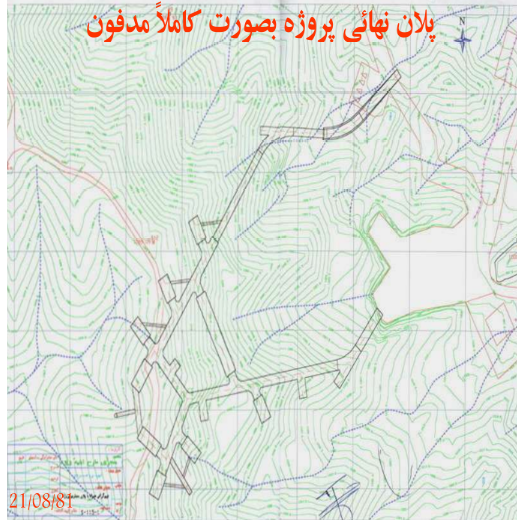
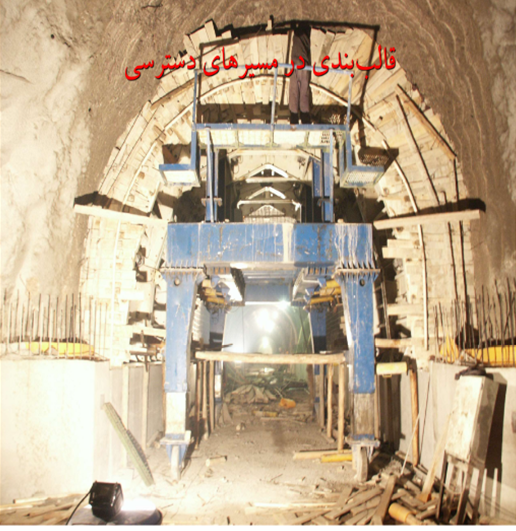
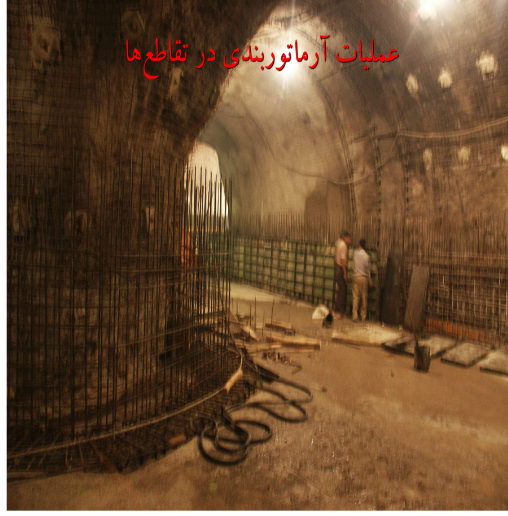

Figure 5. Iran Nuclear Archive tunnel schematic for Shahid Boroujerdi (rotated 90 degrees for easier viewing), along with archive images of the construction of the tunnels, showing lining of the tunnels.
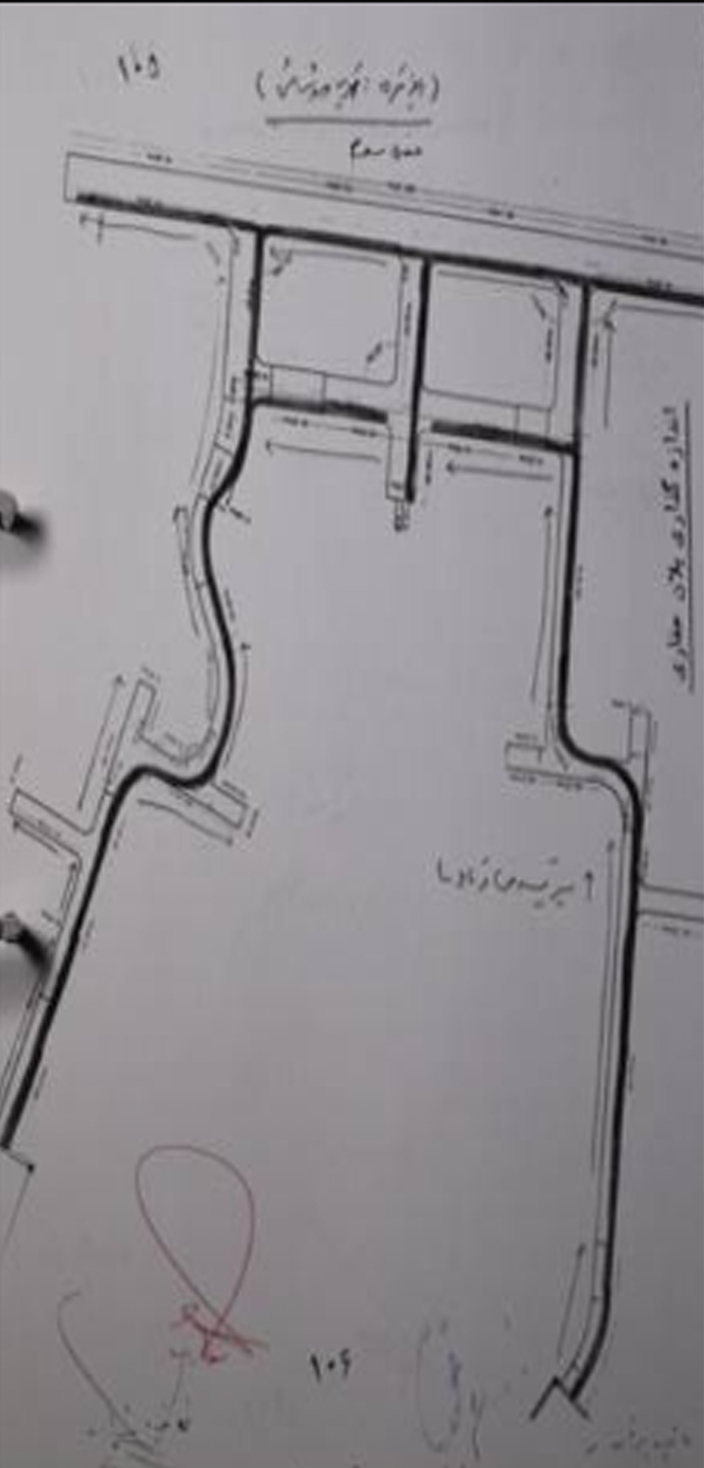
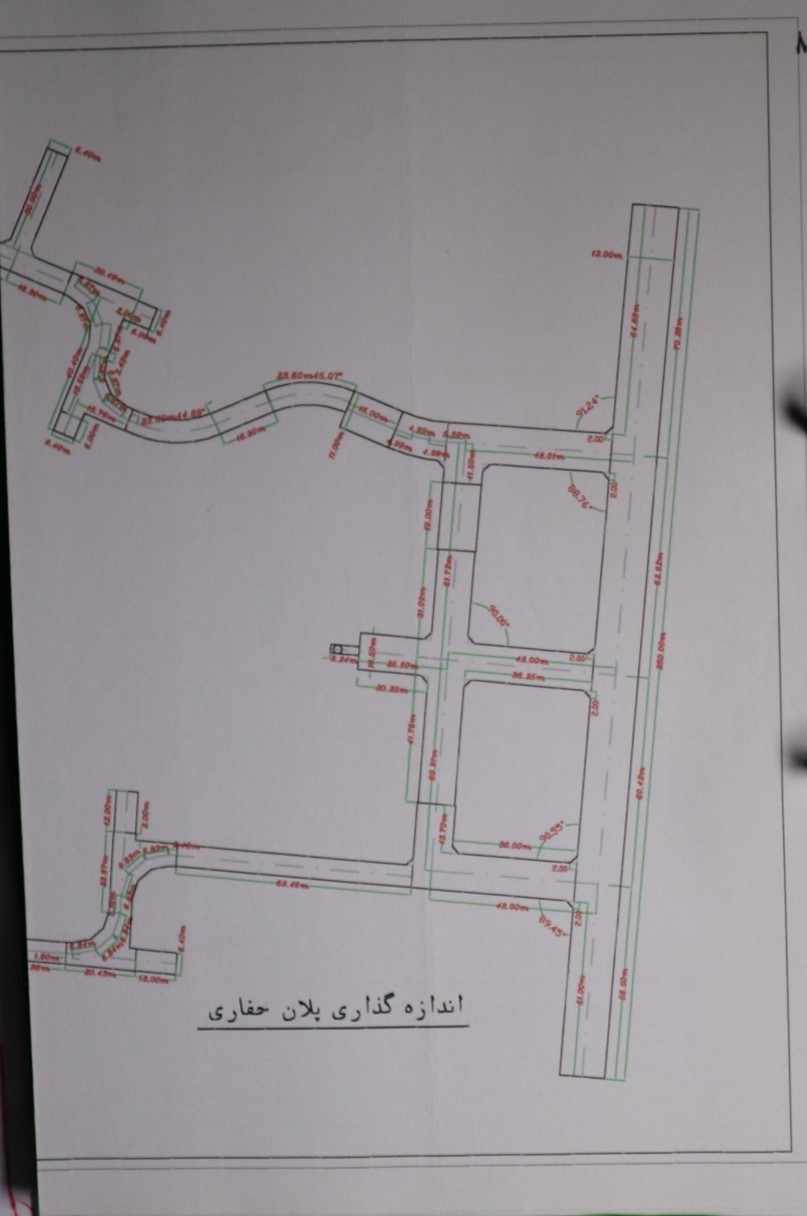
Figure 6. Two schematics of the Fordow (Al Ghadir) tunnel complex from the Nuclear Archive.
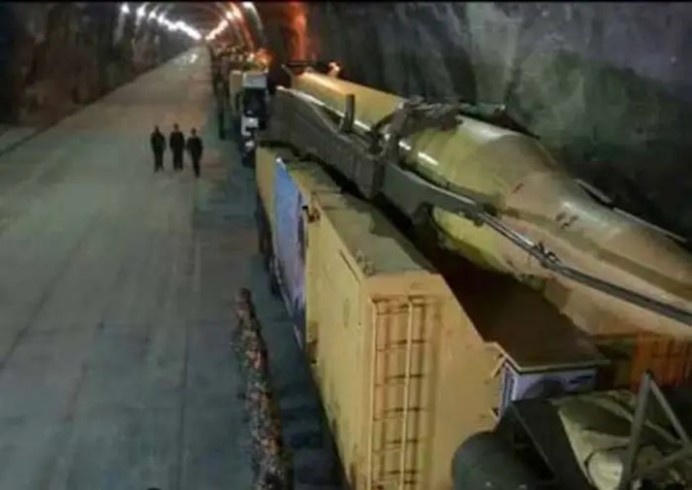
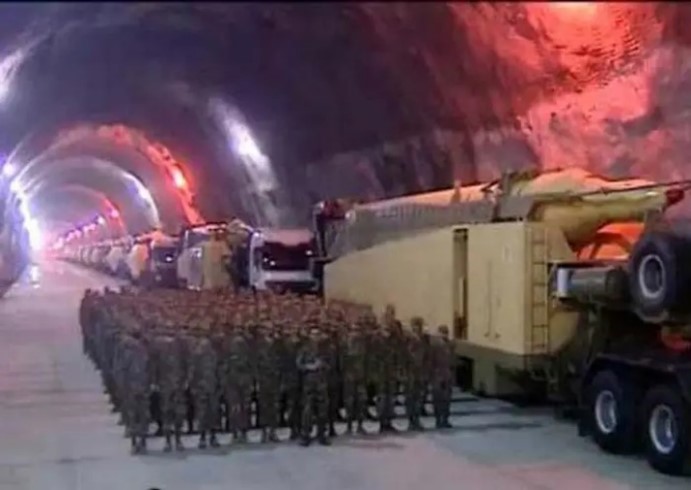
Figure 7. Underground missile base. Source: Iranian television.
Other Activities at the Natanz Site?
One can only speculate on what else could fit inside the new underground spaces at Natanz. Certainly, the most worrisome possibility is that in addition to a new advanced centrifuge assembly facility, it would hold a small centrifuge enrichment plant.
Given that activity at this particular Natanz location was first publicly observed in 2007, but appeared subsequently abandoned, what was Iran’s original intent for this location? Could it also be related to its 2010 announcement that it had “’earmarked close to 20 sites’” to build ten additional enrichment facilities, 9 an announcement sparked by the West’s 2009 exposure of the secret Fordow (Al Ghadir) enrichment site but never implemented? Could Iran now be planning to install a small enrichment plant at this site?
Such an enrichment plant would likely not be as large as Fordow, with its main hall having an area of 3250 square meters. However, Fordow was designed for 3000 IR-1 centrifuges and a feedstock of about 3.5 percent enriched uranium when producing weapon-grade uranium. A relatively small number of advanced IR-6 centrifuges, say 1000, would be enough to create a more powerful enrichment plant, providing a doubling of the enrichment output compared to Fordow and requiring about one third of the floor area of Fordow’s main hall.
Conclusion
The destruction of the ICAC has limited Iran’s ability to assemble advanced centrifuges, even 18 months after the explosion. Although Iran has created a temporary, substitute facility, likely at the main Natanz site, its capability is limited. The sheer size of the construction project may delay the replacement of the ICAC, which would require only a relatively small area of less than 4000 square meters.
It is unclear if the currently visible three tunnel entrances at different elevation levels will lead to one connected set of halls or two sets, where one may be much larger than the other. The area should be further monitored for any construction of ventilation systems on the surface or construction of additional portals. Greater transparency about the plans for the facility should be sought from Iran.
In 2022, the new underground Natanz site may start to operate. Its completion and operation would serve to reconstitute Iran’s ability to deploy thousands of advanced centrifuges each year, once again complicating any effort to lengthen its breakout or sneak-out timelines in a nuclear agreement. Efforts should be made to dissuade Iran from finishing this facility, or failing that, to at least disrupt its procurements of needed equipment and raw materials, many of which would be in violation of international sanctions, the procurement channel of the Joint Comprehensive Plan of Action (JCPOA), or other countries’ strategic trade controls.
Moreover, depending on their size, the deeply buried halls may be able to hold, either in the short- or long-term, a small centrifuge enrichment facility able to produce significant amounts of weapon-grade uranium, posing a great threat in the event of further buildups of centrifuge capabilities, whether in violation of the JCPOA or in accordance with its sunsets, or significantly degraded International Atomic Energy Agency inspections.
1. Senior Fellow at Jewish Institute for National Security of America who served in foreign policy positions in the administrations of George H.W. Bush, Bill Clinton, and George W. Bush. ↩
2. MEMRI, “Iranian Nuclear Chief Day Before Natanz Nuclear Facility Blast: We Activated IR-6 Centrifuge Chain,” MEMRI TV Videos, Interview with Ali-Akbar Salehi that aired on channel 1 (Iran) on April 10, 2021,https://www.youtube.com/watch?v=qLmQJOhSusE. ↩
3. David Albright, Sarah Burkhard, and Spencer Faragasso, “A Comprehensive Survey of Iran’s Advanced Centrifuges,” Institute for Science and International Security, December 2, 2021, https://isis-online.org/isis-reports/detail/a-comprehensive-survey-of-irans-advanced-centrifuges. ↩
4. David Albright, Sarah Burkhard, and Frank Pabian, “Update on Natanz: Construction Progresses Towards Large-scale Tunnel Complex,” Institute for Science and International Security, January 11, 2021, https://isis-online.org/isis-reports/detail/update-on-natanz-construction-progresses-towards-large-scale-tunnel-complex/8 ↩
5. “Iran nuclear sites may be beyond reach of ‘bunker busters,’” Reuters, January 12, 2012, https://www.reuters.com/article/us-iran-nuclear-strike/iran-nuclear-sites-may-be-beyond-reach-of-bunker-busters-idUSTRE80B0WM20120112 ; and Institute for Science and International Security, “Ahmadinejad Announcement Laying Groundwork for Official Policy of Nuclear Ambiguity?, ” June 23, 2011, https://isis-online.org/isis-reports/detail/ahmadinejad-announcement-laying-groundwork-for-official-policy-of-nuclear-a/8. ↩
6. David Albright with Sarah Burkhard and the Good ISIS Team, Iran’s Perilous Pursuit of Nuclear Weapons, (Washington, DC: Institute for Science and International Security, 2021). ↩
7. “Underground Ramp Design Parameters,” Mine Design Queens University, last page modification on February 10, 2014, https://minewiki.engineering.queensu.ca/mediawiki/index.php/ ; and Thomas, Doreen A., Marcus Brazil, David H. Lee, and Nicholas C. Wormald. “Network Modelling of Underground Mine Layout: Two Case Studies,” International Transactions in Operational Research, Volume 14, No. 2, 2007, p. 143-158. https://doi.org/10.1111/j.1475-3995.2007.00579.x ↩
8. Kimley Horn and SRF Consulting Group, Recommended Parking Ramp Design Guidelines, Appendix 5, (prepared for DMC Transportation & Infrastructure Program, City of Rochester, MN, 2016), https://www.rochestermn.gov/home/showpublisheddocument/18472/636591225162030000. ↩
9. “Iran picks sites for 10 uranium enrichment plants,” Reuters, February 22, 2010, https://www.reuters.com/article/us-iran-nuclear-sites/iran-picks-sites-for-10-uranium-enrichment-plants-idUSTRE61L25L20100222. ↩

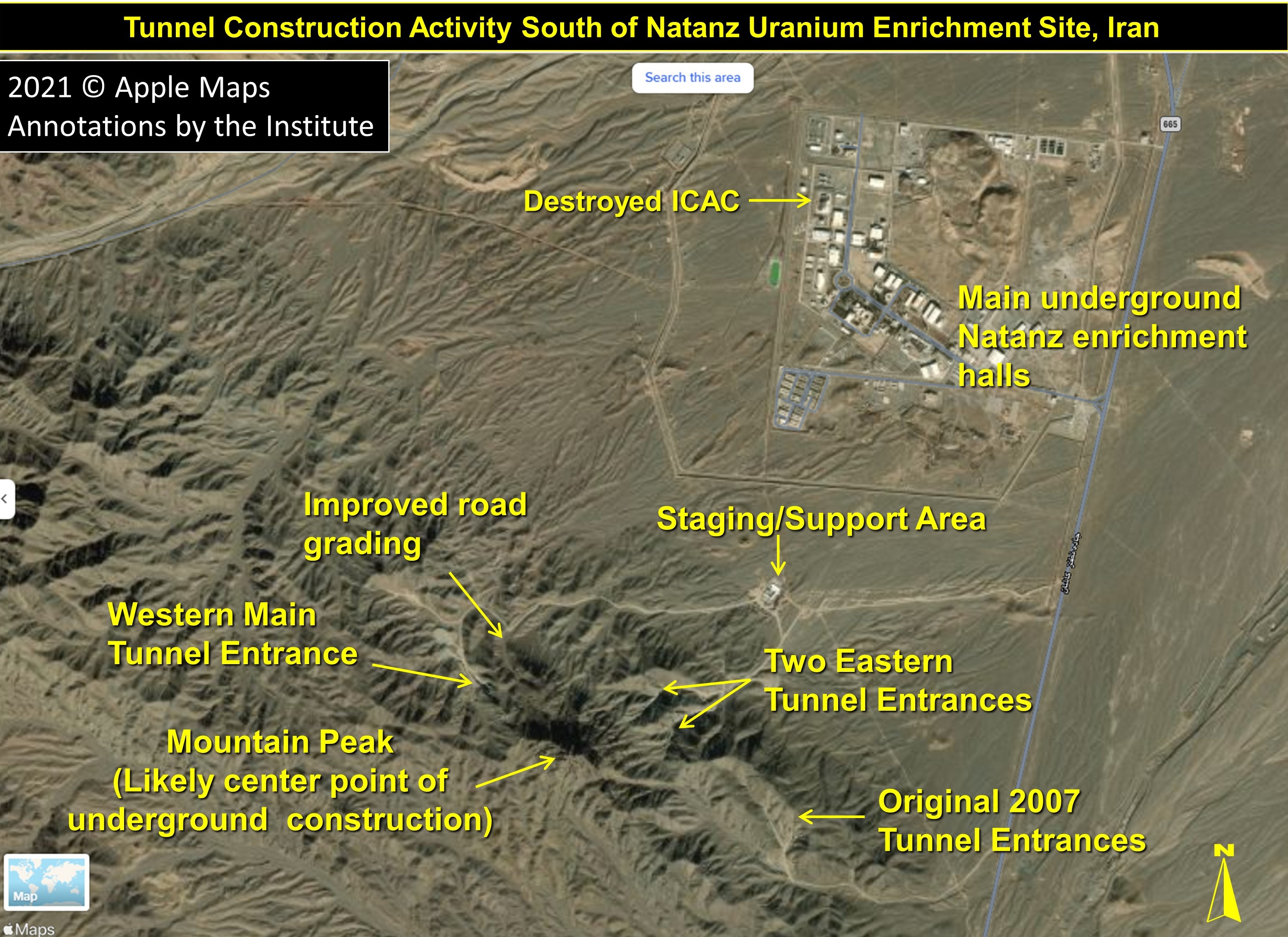
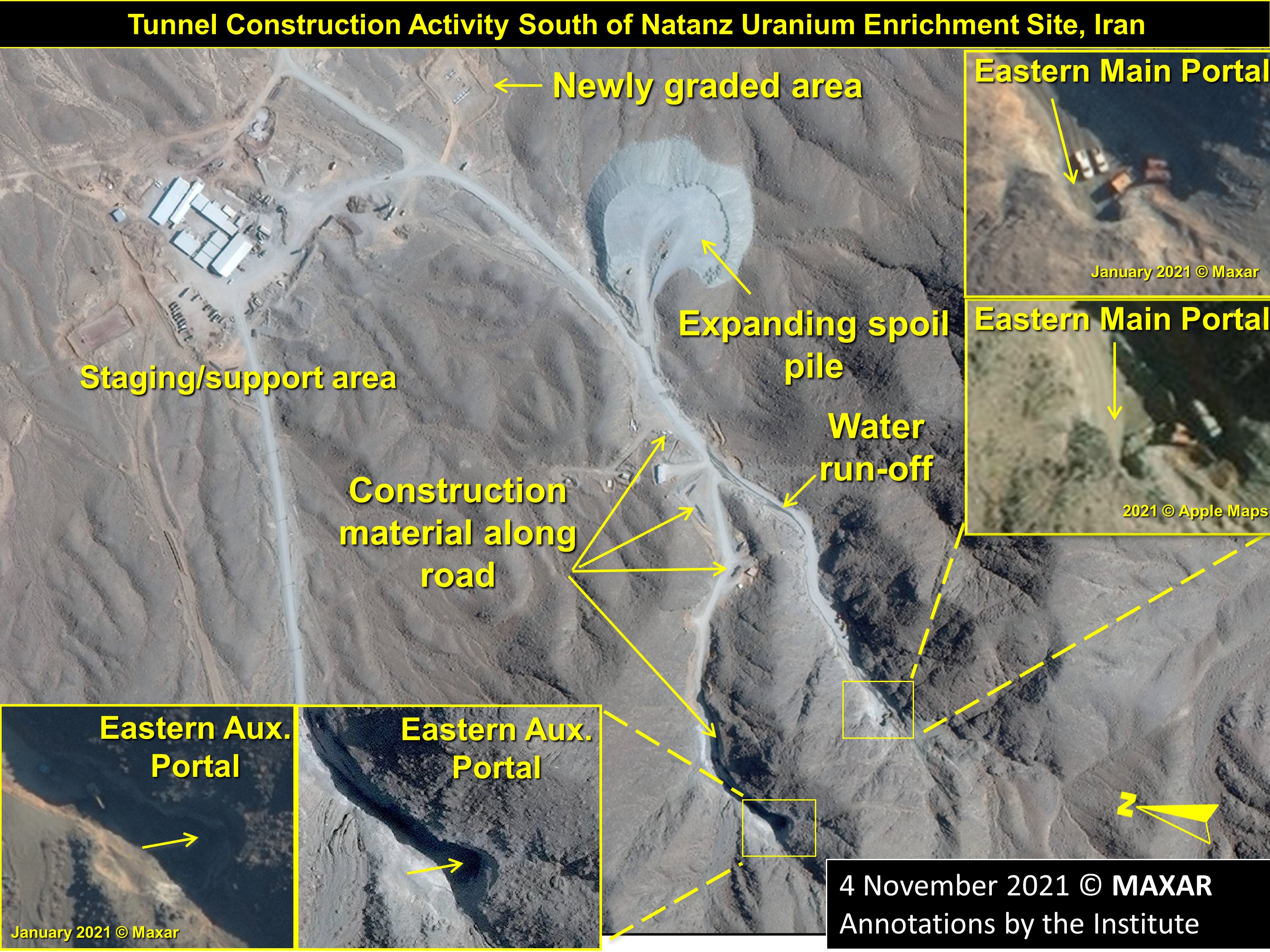
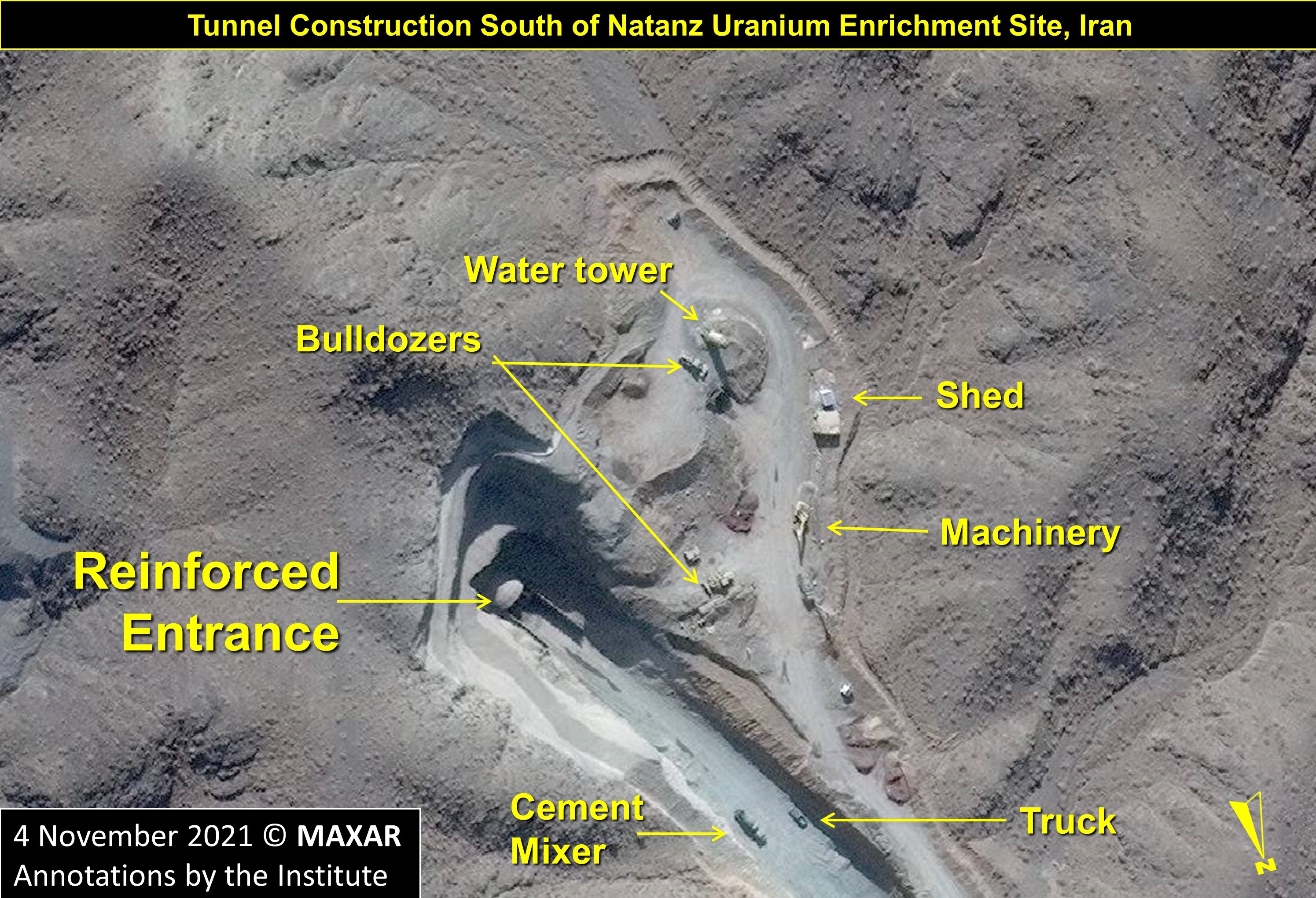
 twitter
twitter